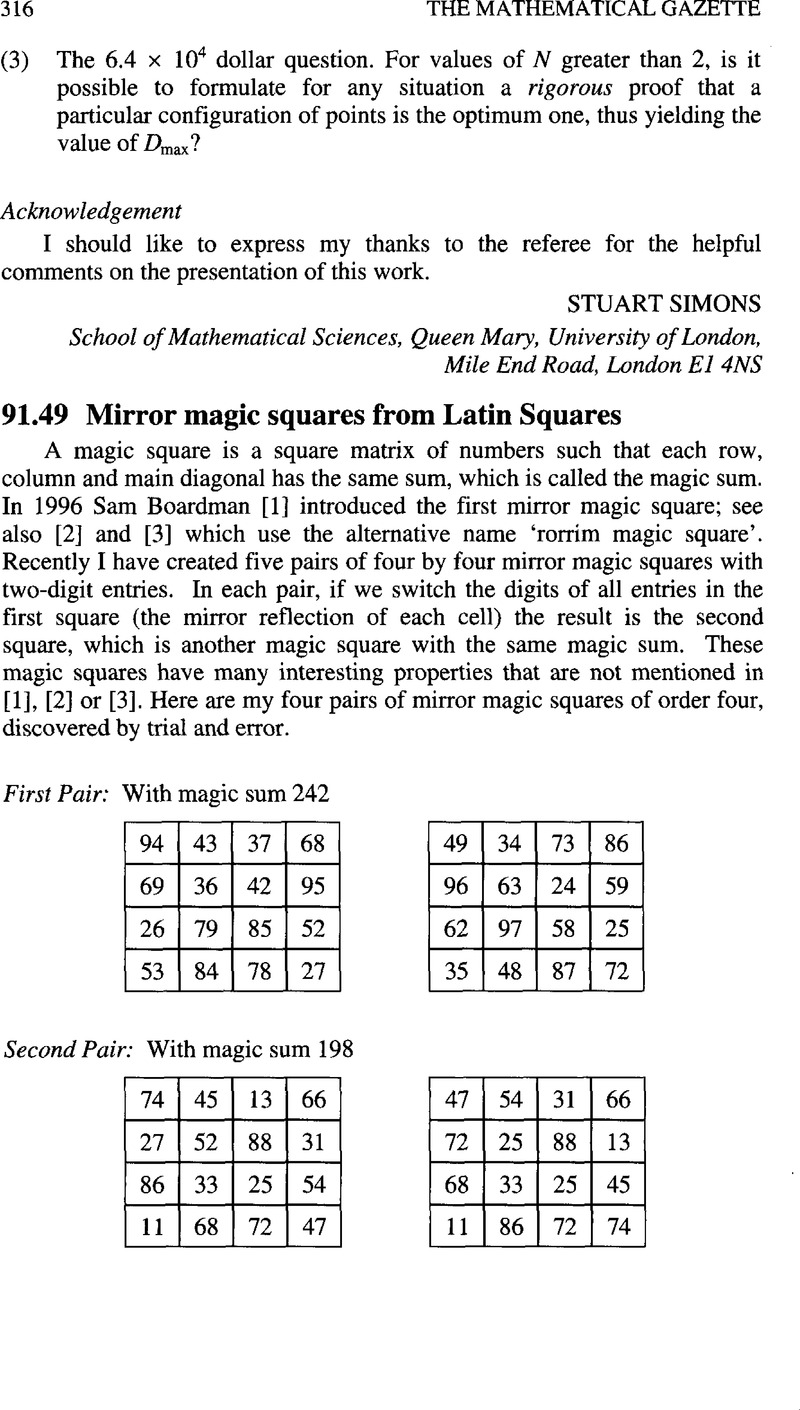No CrossRef data available.
Article contents
91.49 Mirror magic squares from Latin Squares
Published online by Cambridge University Press: 01 August 2016
Abstract
An abstract is not available for this content so a preview has been provided. Please use the Get access link above for information on how to access this content.

Information
- Type
- Notes
- Information
- Copyright
- Copyright © The Mathematical Association 2007
References
1.
Boardman, S., Theta problem page, Mathematics Department, Manchester University, Theta, 10 (2) (1996) p. 25.Google Scholar
3.
Pickover, C., The Zen of magic squares, circles and stars, Princeton University Press (2002) pp. 164–165.Google Scholar
4.
Behforooz, H., Permutation free magic squares, Journal of Recreational Mathematics, 33 (2) (2005) pp. 103–106.Google Scholar
5.
Behforooz, H., Behforooz magic squares derived from magic-Latin-sudoku squares, to appear in Journal of Recreational Mathematics.Google Scholar
6.
Brown, J. W., Cherry, F., et al, Completion of the spectrum of orthogonal diagonal Latin squares. In: Graphs, matrices and designs (Rees, R., ed.), Marcel Dekker, New York (1992) pp. 43–49.Google Scholar
7.
Dénes, J. and Keedwell, A. D., Latin squares and their applications, Academic Press, New York (1974) pp. 194–214.Google Scholar

